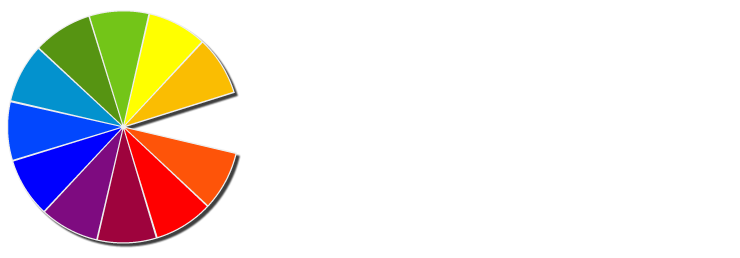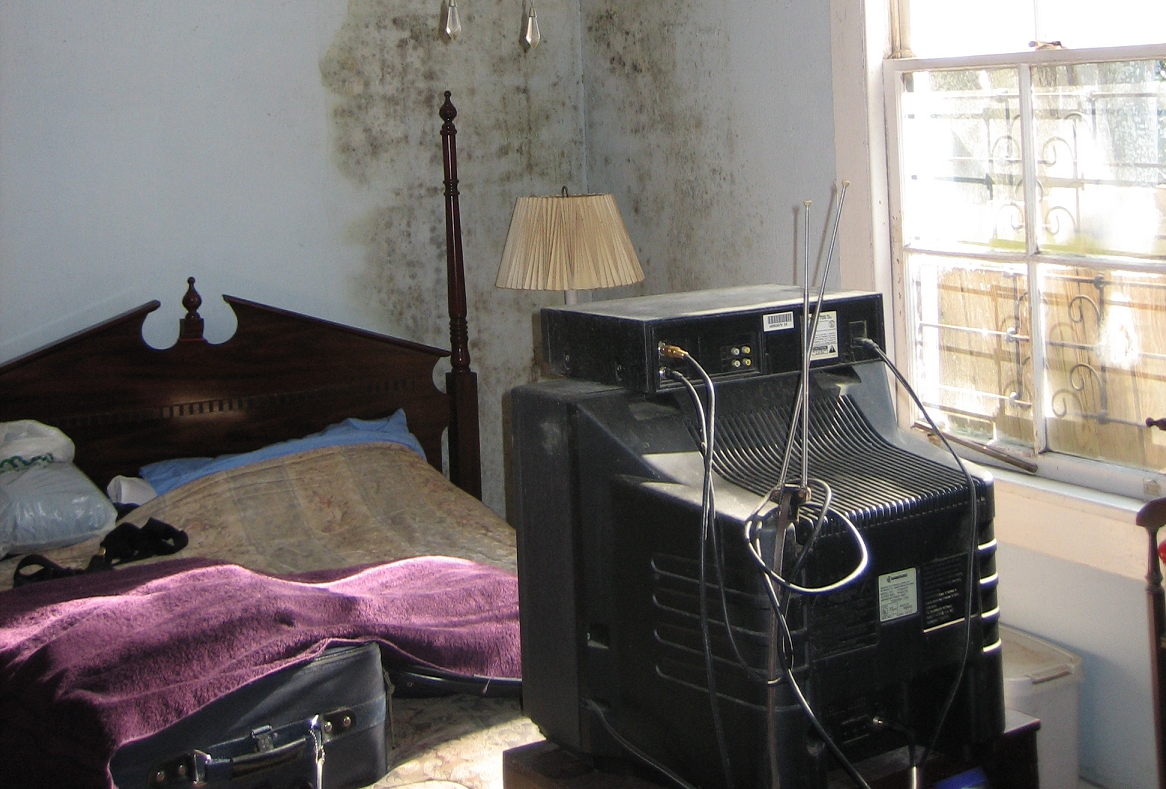New Yorkers have a real knack for rolling with the punches, but that doesn’t mean they should willingly deal with black mold and the slew of health issues it brings. Most don’t realize how common mold is in their homes or how serious the health risks can be when it goes undetected, which is where mold testing in NYC comes in.
All kinds of mold can lurk in the shadows, nooks and crannies of older buildings, basement units, and homes with leaks or high humidity. It can fester behind walls or inside HVAC systems. Not all mold is toxic, but it’s all harmful, and black mold (Stachybotrys chartarum) poses some of the most serious health risks. It can trigger allergic reactions, asthma flare-ups, and even serious lung conditions.
A solid NYC mold inspector negates these problems by getting to the root cause of what’s making you sick. That’s why you should call one if you have symptoms like coughing, fatigue, or breathing difficulties that improve when you’re away from home.
In this guide, we’ll explore how black mold affects your health and why it’s so common in NYC. We’ll also show you how proper mold testing can protect your family and your home. Whether you’re a renter, homeowner, or landlord, understanding when to call a mold inspector in NYC could make a big difference.
What Is Black Mold and Where Does It Hide in NYC Homes?
Black mold is the common name for Stachybotrys chartarum, a type of toxic mold that thrives in damp, low-light environments. It tends to have black or dark green coloration, and can grow on materials like drywall, ceiling tiles, wood, and insulation, especially after water damage.
In New York City, many buildings are decades old and prone to plumbing issues. Those create plenty of breeding grounds for black mold. You might be able to see some growth, but it’s more likely to fester somewhere you can’t see, like:
- Inside walls after leaks or pipe bursts
- Beneath kitchen or bathroom tile
- In air conditioning units or ductwork
- Around poorly sealed windows
- In basements or ground-floor apartments with poor ventilation
Because so many NYC homes share walls, plumbing systems, and heating infrastructure, mold can spread like a wildfire. A problem in one apartment can easily affect others nearby.
Here’s the challenge: black mold doesn’t always show visible signs. That musty smell you notice when you walk into your apartment? It could be a sign that mold is growing out of sight.
This is why mold testing in NYC is often the only way to confirm if black mold is present, especially in co-ops, older rentals, or buildings with a history of flooding. An experienced mold inspector will know where to look, even if the signs are subtle or hidden from view.
How Mold Affects Your Health
Mold can affect your health in ways that range from irritating to serious. According to the CDC, EPA, and NYC Health Department, exposure to mold, especially black mold, can trigger allergic reactions, respiratory problems, and in some cases, long-term lung conditions.
We cover more general facts about mold’s health impacts in this guide on mold and your health.
Exposure to black mold isn’t the only factor that can damage your lungs. If someone in your home smokes, that combined exposure can further increase the risk of respiratory illness. Learn more about the dangers of smoking.
Common Allergy-Like Symptoms
Many people first notice mold exposure through allergy-like symptoms. These can include:
- Sneezing or nasal congestion
- Red, itchy, or watery eyes
- Skin rashes or irritation
- Post-nasal drip or sinus pressure
These reactions can even happen to people that aren’t specifically allergic to mold. For more sensitive individuals, reactions may develop quickly or worsen over time.
Asthma and Breathing Issues
Mold is a well-known asthma trigger. If you or someone in your household has asthma, exposure to mold can make symptoms worse or lead to more frequent attacks. Some cases even link mold exposure to asthma developing in people who didn’t have it before.
Typical mold-related respiratory symptoms include:
- Coughing or wheezing indoors
- Shortness of breath
- Chest tightness, especially at night or early morning
For those with chronic conditions like asthma or COPD, seasonal triggers can compound the effects of indoor mold. See how to protect your respiratory health during the winter months.
According to the CDC, even trace amounts of mold may cause symptoms in people who are already sensitized. When that person leaves the affected space, if those symptoms ease, that should be ringing the mold alarm.
Severe Reactions in Vulnerable Populations
Some people face a much greater risk from mold exposure, including:
- Infants and young children
- Seniors
- People with chronic lung conditions
- Anyone undergoing chemotherapy or recovering from surgery
- Organ transplant recipients or immunocompromised individuals
In these groups, exposure to black mold can lead to symptoms like fever, extreme fatigue, or even infections that mimic pneumonia but don’t respond to antibiotics.
Seniors are especially vulnerable, and in many cases, it’s caregivers who first notice something’s wrong. Here’s how home caregivers can help identify mold exposure in seniors.
NYC residents recovering at home or living with vulnerable family members should be especially proactive about indoor mold testing. Symptoms might not be immediate, but they shouldn’t suffer in silence.
Can Mold Make You Sick Even If You Can’t See It?
Yes, it can. One of the most frustrating things about mold, especially black mold, is how easily it hides. Even when you can’t see it growing, you might still be breathing in mold spores that affect your health over time. You might not see discoloration or buildup, but the symptoms can still appear.
If you’ve ever wondered, “Why does my apartment smell musty?” or found yourself coughing, sneezing, or feeling fatigued at home but better when you’re outside, that could be mold. Yes, mold can make you sick even if you can’t see it.
These are exactly the kinds of problems a mold inspector in NYC looks for. Professional testing doesn’t rely on visible signs. With tools like air sampling, moisture meters, and lab analysis, inspectors can detect mold spores before they become a widespread issue.
By testing early, you’re solving a maintenance problem and protecting your long-term health.
What Does a Mold Inspector in NYC Do?
If you’re concerned about mold in your home but don’t know where to start, a licensed mold inspector is a stupendous resource. Their job is to locate mold, assess how serious the problem is, and use that data to fuel a course of action.
In New York State, mold inspectors (also called mold assessors) are required to hold a license. That means they’re trained to follow strict guidelines that protect your health and your rights as a tenant or property owner.
A typical mold inspection in NYC may include:
- Visual assessment of all rooms, including hard-to-access spaces like behind appliances, inside closets, or under sinks. Inspectors look for signs of water damage, stains, or past repairs that could indicate hidden mold growth.
- Moisture detection using infrared cameras or moisture meters. Mold thrives in damp environments, so identifying areas with excess moisture highlights where mold is likely to grow.
- Air and surface sampling, often using spore traps or swabs. They send these samples to a lab, which confirms the presence and type of mold. That determines whether it’s allergenic, pathogenic, or toxic like black mold.
- Humidity readings and ventilation checks to determine if poor airflow or high indoor humidity is fueling the mold growth. This can help prevent the problem from returning after remediation.
- Documentation and a written report that outlines what was found, where mold was detected, and whether levels exceed typical background concentrations. This report is often required for remediation and may be used in tenant–landlord disputes.
Each of these steps plays a role in confirming whether mold is present, understanding how severe the issue is, and deciding how to safely address it.
This objective testing is especially important in NYC, where mold issues can involve building-wide infrastructure or be tied to landlord responsibilities under Local Law 55. A third-party assessment helps establish what’s going on and how urgent it is to act.
Your Legal Rights Under NYC’s Local Law 55
You might be surprised by the rights New York City grants you if you’re a tenant dealing with mold in your apartment. NYC passed Local Law 55 in 2018, which requires property owners to keep residential units free of indoor allergen hazards including mold and pests.
This law applies to buildings with three or more units, which includes many NYC rentals. Under Local Law 55:
- Landlords must investigate and fix mold issues in a timely and safe manner. This means more than just painting over the problem or using bleach. Proper mold remediation must follow health and safety standards.
- Repairs must address the underlying cause, such as plumbing leaks or ventilation problems. Fixing mold without solving moisture issues is considered a violation.
- Tenants can file a complaint by calling 311 or submitting an issue to the NYC Department of Housing Preservation and Development (HPD). If mold isn’t properly addressed, HPD can inspect the unit and issue violations to the building owner.
For renters wondering, “Can I sue my landlord for mold in NYC?” or “What does NYC law say about mold in apartments?” start with Local Law 55. While it doesn’t guarantee compensation, it sets a legal precedent for holding landlords accountable for health hazards like indoor mold.
Mold inspectors can also play a role here. Their reports may support a tenant’s case if legal action or HPD enforcement becomes necessary. Having a documented mold inspection is one of the strongest steps you can take when dealing with a persistent or unsafe living situation.
Why Mold Testing in NYC Isn’t Optional
New York has tons of humidity, especially in the summertime, and old buildings. It’s part of the city’s charm and character, and it’s also why mold testing shouldn’t be considered optional. It’s a smart step toward protecting your health and home.
Many residents assume that mold only becomes a concern when it’s visible. But, if you can visually see black mold on your walls or ceiling, it’s probably been spreading for weeks or months. It could already be affecting your body, especially if you or someone you live with has asthma, allergies, or a weakened immune system.
Mold isn’t the only indoor threat. Explore how air pollution affects indoor and outdoor air quality in NYC.
Letting mold continue to fester also leads to indirect health risks like structural damage, poor indoor air quality, and expensive repairs. Mold testing helps identify the problem early, before it spreads behind walls or into ventilation systems where it’s harder and more expensive to remove.
Scientific studies have linked long-term mold exposure to asthma development and even conditions like hypersensitivity pneumonitis, particularly in damp building environments. The shared HVAC systems and limited airflow characteristic to NYC can make mold exposure difficult to avoid.
If you’re a renter, mold testing can give you documentation to support your rights under Local Law 55. If you’re a homeowner, it can help prevent costly renovations and health-related complaints. Either way, it’s not just about spotting mold. It’s about understanding how it affects your environment, your safety, and your well-being.
What to Do If You Suspect Mold in Your NYC Apartment
If you think mold might be growing in your apartment or if you’ve been feeling unwell at home without a clear cause, there are steps you can take right now to protect yourself and get answers.
1. Start documenting what you notice.
Write down any symptoms that worsen when you’re indoors, and note things like musty smells, visible stains, peeling paint, or signs of previous water damage. This information will help professionals better understand the situation.
2. Look for visual signs, but don’t rely on them.
While black mold can sometimes be seen on walls, ceilings, or tile grout, much of it hides behind surfaces. Just because you don’t see mold doesn’t mean it’s not there.
3. Contact a licensed mold inspector in NYC.
A professional inspection is the only reliable way to detect hidden mold and understand the severity of the problem. Licensed assessors use tools and lab testing, not guesswork, to uncover what’s in your air and walls.
4. Notify your landlord in writing.
If you’re renting, send a detailed letter or email describing the issue and requesting prompt action. Include any symptoms or visible signs you’ve noticed, and keep a copy for your records.
5. File a complaint with 311 if necessary.
If your landlord doesn’t respond or refuses to act, you can report the issue to NYC’s Department of Housing Preservation and Development. They may send an inspector to check the unit and require repairs under Local Law 55.
These steps deal with the most pressing matter, and create a paper trail that can support future enforcement or remediation needs.
Your Health Is Too Important to Ignore Mold
Black mold is more than just a nuisance. It’s a health hazard that often goes unnoticed in New York City’s older, tightly packed buildings. Whether you live in a high-rise rental, a pre-war walkup, or a basement apartment, indoor mold can quietly affect your well-being without leaving visible signs.
If you’ve been dealing with unexplained symptoms like coughing, skin irritation, or persistent fatigue, don’t wait for the problem to get worse. Mold testing in NYC gives you real answers, whether you’re a tenant trying to protect your rights or a homeowner hoping to maintain a healthy living space.
You don’t have to be an expert to take the first step. A licensed mold inspector can help identify the source, document the findings, and point you toward safe, effective solutions.
Whether you’re protecting your family, your property, or your peace of mind, understanding the role of mold and testing for it when necessary can make all the difference.
Resources
Dyląg M, Spychała K, Zielinski J, Łagowski D, Gnat S. Update on Stachybotrys chartarum-Black Mold Perceived as Toxigenic and Potentially Pathogenic to Humans. Biology (Basel). 2022;11(3):352. Published 2022 Feb 23. doi:10.3390/biology11030352
https://www.cdc.gov/niosh/mold/health-problems/index.html
https://www.epa.gov/mold/mold-and-health
https://www.nyc.gov/assets/doh/downloads/pdf/asthma/local-law-55.pdf
National Toxicology Program (NTP). 2024. NTP technical report on the toxicity study of Stachybotrys chartarum (CASRN 67892-26-6) administered by inhalation to B6C3F1/N mice. Research Triangle Park, NC: National Toxicology Program. Toxicity Report 107.



